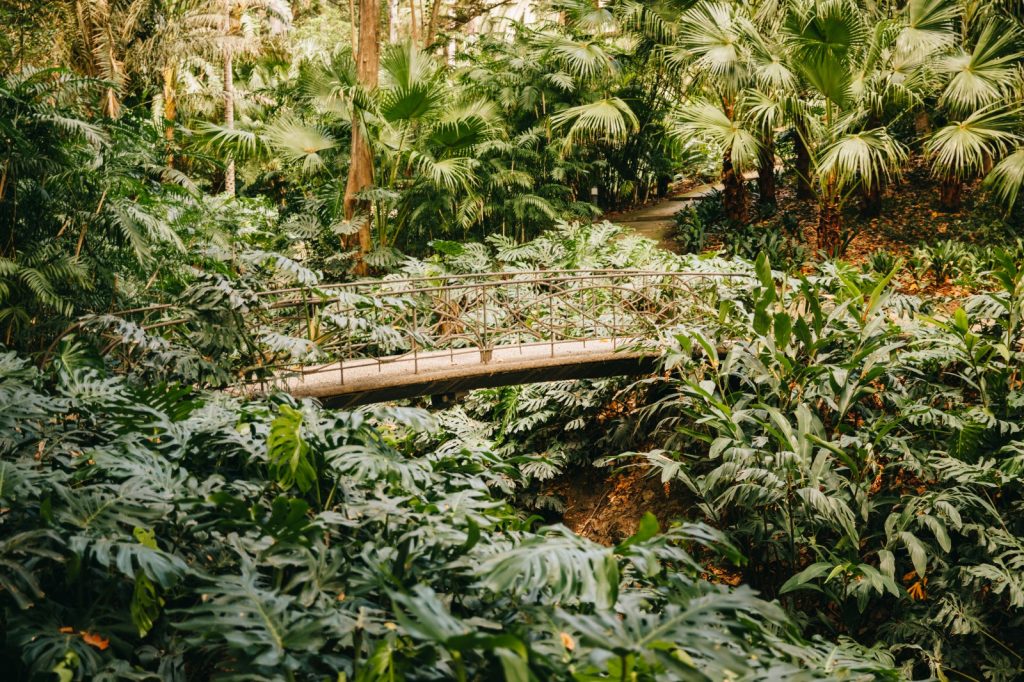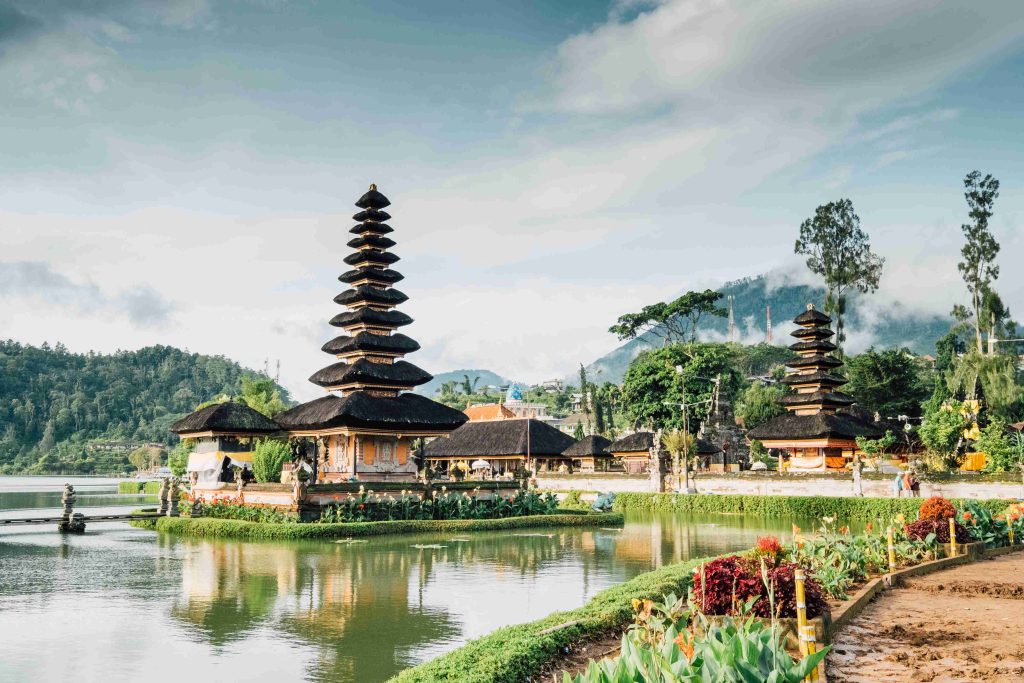Nature’s finest masterpiece – this is how the Bogor Botanical Gardens, or Kebun Raya Bogor, have been described by those fortunate enough to wander through its enchanting pathways. Located in the heart of Indonesia, this botanical wonderland is a testament to the sheer beauty and diversity that Mother Earth has to offer. In this article, we invite you to immerse yourself in the captivating beauty of the Bogor Botanical Gardens.
Indonesia, a vast archipelago nestled between the Indian and Pacific Oceans, is renowned for its rich cultural tapestry, breathtaking landscapes, and biodiversity that rivals few other nations. At the heart of this natural splendor lies the Bogor Botanical Gardens, a living chronicle of Indonesia’s green heritage.
Bogor Botanical Gardens: A Living Chronicle of Indonesia’s Green Heritage

These gardens are not just a feast for the eyes but also a testament to Indonesia’s commitment to preserving its ecological diversity. Let’s take a stroll through this lush oasis and explore its historical significance, botanical treasures, and the vital role it plays in conservation.
A Glimpse into the Past
The Bogor Botanical Gardens, known locally as ‘Kebun Raya Bogor,’ have a history as vibrant and diverse as the flora they house. Established in 1817 by Sir Stamford Raffles, the British Lieutenant Governor of Java, the gardens were originally intended to be a research center for agriculture and a sanctuary for exotic plants. Over time, they evolved into a symbol of Indonesia’s dedication to understanding, preserving, and celebrating its natural heritage.
A Botanical Wonderland
Spanning over 87 hectares, the Bogor Botanical Gardens are a microcosm of Indonesia’s biodiversity, boasting more than 15,000 species of trees and plants from all corners of the archipelago. As you wander along the garden’s meandering paths, you’ll encounter towering trees, colorful orchids, fragrant spices, and a captivating collection of palms, bamboos, and medicinal plants.
One of the highlights is the iconic Giant Lotus Lily (Victoria amazonica), with leaves that can span up to two meters in diameter, providing a surreal sight as they seemingly float on the garden’s serene lakes. Another marvel is the Rafflesia arnoldii, the largest flower in the world, which can be spotted if you’re lucky, but it requires impeccable timing as it only blooms for a few days.
The Gardens’ famed collection of orchids is a paradise for enthusiasts and botanists alike, showcasing an array of intricate shapes and vibrant colors. Indonesia’s diverse climate zones are meticulously recreated here, making it a botanical treasure trove that keeps researchers, students, and nature lovers intrigued and inspired.

A Center for Research and Conservation
Beyond their aesthetic appeal, the Bogor Botanical Gardens play a pivotal role in scientific research and conservation efforts. The Gardens serve as an open-air laboratory where botanists, horticulturists, and researchers from across the globe collaborate to study and conserve rare and endangered species. These efforts are critical given the alarming rate at which Indonesia’s rainforests and ecosystems are disappearing due to deforestation and urbanization.
One of the notable projects conducted at the Gardens is the cultivation and preservation of rare and threatened plant species, helping to ensure their survival in the wild. Moreover, the Gardens act as an educational hub, offering workshops and programs to raise awareness about Indonesia’s unique plant life and the importance of conservation.
Also read : Mandalika Circuit: Accelerating the Thrill of Racing in Indonesia
A Green Oasis for All
The Bogor Botanical Gardens are not just a scientific marvel but also a place where visitors can connect with nature and experience the wonder of Indonesia’s biodiversity. The Gardens offer a tranquil escape from the bustling city of Bogor, located just an hour away from Jakarta, the capital of Indonesia. It’s a place where families picnic, children play, and couples stroll hand in hand amidst the lush foliage and serene lakes.
Visitors can also explore the beautifully maintained themed gardens within the complex, such as the Mexican Garden, Japanese Garden, and French Garden, each providing a distinct cultural and horticultural experience. The Bogor Botanical Gardens are not just a sanctuary for plants but also a sanctuary for the human spirit, fostering a deeper appreciation for the natural world.
Preserving the Green Legacy
As Indonesia grapples with the challenges of modernization and environmental conservation, the Bogor Botanical Gardens remain a shining example of the nation’s commitment to preserving its green legacy. With their historical significance, botanical treasures, and ongoing research and conservation efforts, these gardens continue to be a beacon of hope for Indonesia’s unique and diverse flora.
In a world where biodiversity is under threat, places like the Bogor Botanical Gardens serve as a reminder of our responsibility to protect and cherish the natural wonders that surround us. They inspire us to take action and ensure that future generations can also walk through these living chronicles of our planet’s ecological heritage, just as Sir Stamford Raffles did over two centuries ago.
So, if you ever find yourself in Indonesia, make sure to pay a visit to the Bogor Botanical Gardens. It’s not just a garden; it’s a living testament to Indonesia’s green heritage and a testament to the importance of preserving the planet’s biodiversity for generations to come.
The History of Bogor Botanical Gardens

Spanning over two centuries, the gardens have witnessed the ebb and flow of history, reflecting the intersection of science, culture, and nature. This article delves into the fascinating history of the Bogor Botanical Gardens, from their humble beginnings to their current status as a world-renowned center of botanical research and conservation.
Chapter 1: The Birth of Bogor Botanical Gardens
The story of the Bogor Botanical Gardens began in the early 19th century when the Dutch colonial government established a garden for the cultivation of tropical plants. In 1817, Sir Thomas Stamford Raffles, the British Lieutenant-Governor of Java, recognized the area’s potential and designated it as a botanical garden. The location was chosen for its favorable climate and proximity to the capital, Batavia (now Jakarta).
Chapter 2: Transformation under Dr. Caspar Georg Carl Reinwardt
The true transformation of the Bogor Botanical Gardens occurred under the leadership of Dr. Caspar Georg Carl Reinwardt, a German-born botanist who became the first director in 1817. Reinwardt’s vision was to create a world-class institution dedicated to the study and conservation of tropical plants. Under his guidance, the gardens began collecting and propagating a vast array of plant species from across the Indonesian archipelago.
Chapter 3: Expansion and Development
Throughout the 19th century, the Bogor Botanical Gardens continued to expand and develop. New sections were added, including a herbarium and a library, which enriched the institution’s research capabilities. The gardens also played a crucial role in introducing exotic plants to Indonesia, contributing to the diversification of the country’s flora.
Chapter 4: A Center of Scientific Excellence
By the late 19th century, the Bogor Botanical Gardens had firmly established themselves as a center of scientific excellence. Researchers from around the world came to study the diverse plant species and contribute to our understanding of tropical botany. The gardens became a hub for scientific exchange and collaboration, further enhancing their reputation.
Also read : Siamang Gibbons: The Singing Primates of Southeast Asia
Chapter 5: Turbulent Times
The 20th century brought its share of challenges to the Bogor Botanical Gardens. During World War II, the gardens suffered considerable damage, but they were later restored by dedicated staff. Indonesia’s struggle for independence in the mid-20th century also had an impact on the gardens, but they continued to persevere.
Chapter 6: UNESCO World Heritage Status
In 1995, the Bogor Botanical Gardens were designated a UNESCO World Heritage Site, recognizing their historical and scientific significance. This prestigious status has not only protected the gardens but also boosted their international reputation as a vital center for botanical research and conservation.
Chapter 7: Conservation and Education
Today, the Bogor Botanical Gardens continue to fulfill their mission of conservation and education. They house over 13,000 species of plants, including endangered and rare ones. The gardens also play a critical role in educating the public about the importance of preserving biodiversity and maintaining a sustainable environment.
Conclusion
The history of the Bogor Botanical Gardens is a testament to the enduring power of science and nature. From its humble beginnings as a colonial garden to its current status as a global center for botanical research and conservation, the gardens have evolved and adapted to the changing times. As we look to the future, the Bogor Botanical Gardens will undoubtedly continue to play a crucial role in our understanding of tropical flora and the preservation of our planet’s biodiversity.

Ahmad Rizal Rasyid is a seasoned traveler with a passion for exploring new places and experiencing different cultures. With a lifetime of travel experience under his belt, he shares his insights and experiences through his writing, and uses his skills in Google Ads to help promote Jungle Inn and Restaurant in Bukit Lawang







